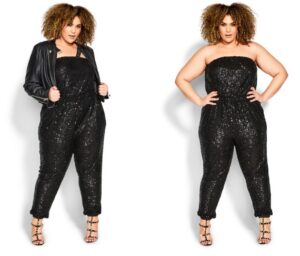To keep warm when running in the cold, wear layers and moisture-wicking materials. Layering allows you to adjust your body temperature and avoid overheating.
Running in the cold can be invigorating, but it’s important to dress appropriately to stay warm and safe. When the temperatures drop, it’s essential to wear the right clothing to prevent hypothermia and frostbite. The general rule of thumb is to dress in layers to trap body heat and wick away sweat.
The base layer should be made of moisture-wicking materials such as wool or synthetic fabrics, followed by a middle layer for insulation, and an outer layer for wind and water resistance. Additionally, don’t forget to protect your extremities with gloves, a hat, and suitable footwear. By dressing appropriately, you can run safely and comfortably, even in colder temperatures.

Credit: triathlonmagazine.ca
Preparing For Winter Running
Preparing for winter running:
As winter approaches, it is important to prepare well for your cold weather runs. Here are some tips on how to prepare for winter running:
Importance Of Staying Warm While Running In Cold Weather
Staying warm while running in cold weather is crucial for avoiding hypothermia and other cold-related illnesses. Here are some tips to help you stay warm:
- Dress in layers: Start with a moisture-wicking base layer, then add a insulating layer and finish off with a lightweight, wind-resistant jacket.
- Cover your extremities: Wear a hat, gloves and thick socks to keep your head, hands and feet warm as these body parts lose heat quickly.
- Opt for high-visibility layers: Choose brightly coloured or reflective clothing to ensure that you are visible to others on the road.
Understanding The Potential Risks Of Cold Weather Running
Running in cold weather can be risky if you are ill-prepared. Here are some of the potential risks to keep in mind:
- Hypothermia: A life-threatening condition that can occur when your body temperature drops below normal.
- Frostbite: When your skin and underlying tissues freeze, causing damage to the affected area.
- Chilblains: A painful inflammation of the small blood vessels in your skin.
Developing A Strategy For Dressing For Cold Weather Running
Dressing appropriately is crucial to enjoying a comfortable and safe cold weather run. Here’s a strategy to help you dress for winter running:
- Start with a moisture-wicking base layer: This will help keep sweat away from your skin and prevent chills.
- Layer up with insulating layers: Add a fleece or thermal top, followed by a wind-resistant jacket.
- Cover your extremities: Wear gloves, a hat and thick socks to keep your fingers, toes and head warm.
- Choose the right footwear: Opt for shoes with good traction and insulation to avoid slipping and keep your feet warm.
By following these tips, you’ll be able to enjoy your winter runs safely and comfortably!
Base Layer
What A Base Layer Is And Why It Is Important
When running in cold weather, it is vital to stay warm and dry. That’s where a base layer comes in handy. Here are some key things to know about base layers:
- Base layers are the first layer of clothing that comes into contact with your skin and is designed to keep you warm, dry and comfortable during cold weather runs.
- They provide insulation without trapping sweat against your skin – helping to regulate your body temperature and keep you comfortable through the changing weather conditions.
- A good base layer should fit snugly, but not too tight, allowing for a full range of motion while also trapping heat close to your body.
Different Materials For Base Layers And Their Benefits
There are a variety of materials used for base layers, each with its own set of benefits. Here are some of the most common materials and what makes each one unique:
- Synthetic materials such as polyester and nylon are excellent at wicking away sweat from your skin, keeping you dry and comfortable throughout your run. They are also lightweight and tend to dry quickly.
- Wool base layers (such as merino wool) are great at regulating body temperature and are naturally antimicrobial, meaning they can resist odours even after multiple wears. Wool is also an eco-friendly and sustainable material.
- Silk base layers are thin and lightweight, making them an excellent choice for layering during extremely cold weather. They are also soft and moisture-wicking, keeping you dry and comfortable.
Best Base Layers For Cold Weather Running
Now that you know what base layers are and the materials available, you’re ready to choose the best one for your cold weather runs. Here are some of our top picks for base layers:
- Nike pro warm men’s and women’s long-sleeve top – made with sweat-wicking fabric to keep you dry and warm while running, this top is also fitted to your body, providing the ultimate in comfort and flexibility.
- Smartwool men’s and women’s merino 250 base layer – made of 100% merino wool, this base layer is warm, soft and breathable, making it perfect for cold weather runs. It also features flatlock seams to prevent chafing and a semi-fitted design to ensure comfort and full range of motion.
- Under armour men’s and women’s coldgear armour mock neck – designed specifically for cold weather running, this base layer is made with double-layer fabric that traps heat and wicks away sweat to keep you dry and comfortable. It’s also lightweight and has a four-way stretch design for ultimate flexibility.
By knowing the different materials and benefits that come with choosing the right base layer for cold weather running, you can stay more comfortable and focused on your running performance. Plus, with some of the best base layers recommended here, you’ll be both warm and stylish on your next cold weather run!
Insulating Layer
Importance Of Insulation While Running In Cold Weather
As the temperatures drop during the winter months, it’s crucial to wear appropriate clothing to stay warm while exercising. Insulating layers are an essential part of your cold weather running wardrobe, as they keep you warm by trapping heat close to your body.
Here are some key reasons why insulating layers are critical during cold weather runs:
- Insulating layers help to regulate your body temperature, ensuring that you don’t overheat or become too cold.
- They provide an additional layer of protection against the wind and cold, making it easier to exercise comfortably in chilly conditions.
- They wick moisture away from your skin, preventing sweat from cooling your body down and leaving you feeling wet and uncomfortable.
Different Materials For Insulation Layer And Their Benefits
There are several materials to consider when choosing an insulating layer for cold weather running. Each material has its own unique benefits and characteristics that make it suitable for different types of weather conditions and activity levels. Here are some of the most common materials and their benefits:
- Fleece: A popular insulating material due to its lightweight and breathable nature. Fleece is great for moderately cold temperatures and can be layered easily if needed.
- Wool: Known for its exceptional insulation properties, wool is a great option for extreme cold weather conditions. It’s highly breathable and moisture-wicking, making it an excellent choice for high-intensity activities such as running.
- Synthetic insulation: Made from materials such as polyester or nylon, synthetic insulation is typically lightweight and compressible, making it easy to pack for outdoor activities. It’s also moisture-wicking, making it an excellent choice for high-intensity exercises.
Best Insulating Layers For Cold Weather Running
When selecting an insulating layer for cold weather running, it’s essential to consider several factors, including the temperature, wind, and your activity level. Here are the best insulating layers for cold weather running:
- Lightweight fleece jacket: Perfect for moderately cold temperatures, a lightweight fleece jacket provides excellent insulation without weighing you down.
- Merino wool base layers: Pairing a merino wool base layer with a breathable outer layer provides excellent insulation for extreme cold weather conditions.
- Synthetic insulation vest: A synthetic insulation vest is an excellent option for high-intensity exercises, as it keeps your core warm while allowing your arms to move freely.
Staying warm during cold weather runs is vital for your comfort, safety and maintaining your fitness routine. Insulating layers are an essential part of your running wardrobe, allowing you to exercise comfortably and efficiently in any weather conditions. By choosing the right materials and layering effectively, you can enjoy running outside all year round.
Protective Layer
What A Protective Layer Is And Why It Is Important
When running in the cold weather, wearing multiple layers of clothing is essential, specifically a protective layer that shields the runner from the cold air. A protective layer is an outermost layer of clothing that is windproof and water-resistant, designed to keep the runner warm and dry during the run.
It is important to wear a protective layer when running in the cold as it protects against hypothermia, a condition that occurs when the body loses heat faster than it can produce, leading to a dangerously low body temperature.
Different Materials For Protective Layers And Their Benefits
Not all protective layers are created equal, and the choice of material used is crucial in determining how effective the protective layer will be during the run. These are some materials available for a protective layer:
- Softshell: Softshell is a breathable, flexible, and wind-resistant material, making it an excellent choice for cold weather running. It is water-resistant, but not entirely waterproof, so not ideal for extremely wet conditions.
- Hardshell: Hardshell is a waterproof and windproof material, ideal for running in harsh weather conditions. It is not as breathable as softshell, so runners may feel clammy and sweaty during the run.
- Fleece: Fleece is a warm and breathable material that provides insulation and is ideal for a mid-layer protective layer.
- Gore-tex: Gore-tex is a synthetic material that is waterproof and windproof, yet still allows moisture to escape. It is an excellent choice for running in wet or snowy conditions.
Best Protective Layers For Cold Weather Running
Choosing the best protective layer for cold weather running depends on various factors such as weather conditions, temperature, and personal preferences. Here are some of the best protective layers for cold weather running that provide warmth, breathability, and water resistance:
- Nike shieldrunner jacket – made of water-resistant and windproof material that keeps runners dry and warm in wet and windy conditions.
- Brooks canopy jacket – made of drilayer seal fabric that is both windproof and waterproof to keep the runner dry and comfortable during the run.
- Asics storm shelter jacket – made of waterproof and windproof fabric that provides insulation and warmth, even in sub-zero temperatures.
- Under armour armourvent run jacket – made of water-resistant and breathable material that allows sweat to escape, keeping the runner dry and comfortable.
Wearing a protective layer when running in the cold is essential for the runner’s safety and comfort. Softshell, hardshell, fleece, and gore-tex are some of the materials used to make a protective layer. The best protective layer for cold weather running depends on personal preferences and weather conditions.
Choose a protective layer that is water-resistant, windproof, and breathable to keep the runner warm and comfortable during the run.
Accessories
Importance Of Accessories For Cold Weather Running
Running in the cold weather can be challenging, but with the right gear, you can make the experience more comfortable and enjoyable. Accessories play a vital role in keeping you warm and dry while running in cold weather. Here are some key points to keep in mind:
- Accessories are essential to regulate the body’s temperature and protect it from hypothermia.
- They can also enhance visibility and safety while running in low light conditions.
- The right accessories can make a significant difference in how you feel during and after your run.
Different Types Of Accessories And Their Benefits
Choosing the right accessories can help enhance your performance, keep you comfortable, and protect you from the harsh weather conditions. Here are some different types of accessories and their benefits to consider:
- Headwear such as beanies and headbands can prevent heat loss from the head and ears.
- Gloves and mittens can keep your hands warm and protect them from frostbite.
- Scarves and neck gaiters can keep your neck warm and prevent cold air from entering behind your jacket.
- Socks made of insulating materials such as wool can protect your feet from the cold and wick away moisture.
- Running tights and leggings can prevent muscle injuries and keep you warm and dry.
Best Accessories For Cold Weather Running
When it comes to running in cold weather, the right accessories can help you stay comfortable, safe, and motivated. Here are some of the best accessories to consider for cold weather running:
- A wind-resistant and waterproof jacket to keep you dry and protect you from the wind chill.
- Thermal leggings made of moisture-wicking material to keep your legs warm and dry.
- Running gloves with touch screen compatible fingertips for easy phone access during the run.
- A headlamp or reflective vest for enhanced visibility while running in low light conditions.
- A hydration pack or belt to keep you hydrated without having to carry a water bottle.
Remember, the key to running comfortably in cold weather is to layer up with insulated and moisture-wicking clothing and accessories. With the right gear, you can enjoy the cold weather, and with every step, you’ll feel better than before.
Frequently Asked Questions Of What To Wear When Running In The Cold
What Should I Wear For Running In Cold Weather?
It’s important to dress in layers when running in cold weather. Start with a moisture-wicking base layer, then add an insulating layer, and finish with a waterproof and windproof outer layer. Don’t forget to protect your head, hands, and feet with appropriate gear.
Can I Wear Cotton Clothes While Running In The Cold?
Avoid wearing cotton when running in the cold as it absorbs moisture and will leave you feeling wet and cold. Instead, choose moisture-wicking fabrics that will keep you dry and warm.
Do I Need To Change My Running Shoes In Cold Weather?
No, you don’t need to change your running shoes for cold weather. However, if you’re running on icy or snowy trails, it’s best to wear shoes with extra traction to prevent slipping and falling. Also make sure to wear socks that will keep your feet dry and warm.
Conclusion
Running outdoors in the cold weather can be a daunting task, but it is not impossible. By choosing the right clothing, you can protect yourself from the elements and stay comfortable throughout your workout. It is crucial to wear layers that you can easily remove as you warm up, and invest in clothing that is moisture-wicking to keep you dry and warm.
Don’t forget to protect your extremities with gloves, hats, and socks, and consider adding reflective clothing if you plan on running in low-light conditions. With the right gear and mindset, you can continue to run and stay active even in the coldest months of the year.
So, gear up and hit the road for your next cold-weather run!





